How to Calculate the Cost of a Solar Panel System

We often get asked how much it would cost to install a solar panel system. It actually varies based on whether rebates, tax credits and incentives are available to you. Incentives can lower the price by 30 percent or more. With no incentives, the cost can go as high as $15,000 for a 4kW solar system.
The total cost of a solar system goes beyond the price of solar panels. A number of other components such as the racking, wiring, inverter and solar monitor are also calculated. Other factors affecting the cost of a fully installed solar system include:
- Solar system size - the cost will generally increase if the number of required photovoltaic panels increases.
- Quality of panels and inverter - tier 1 solar panels are 10-30% more expensive than those bought from tier 2 and tier 3 manufacturers.
- Difficulty of installation - proximity of your home to the installation company, pitch of your roof, where your roof is facing and local government regulations will affect the pricing
- Location - prices charged for solar systems vary from state to state. There may be utility solar incentives available where you live.
- Cash or loan - there may be discounts it you pay cash up front
To calculate the cost of a solar panel system, look at the following example:

Sourced from Energysage
The net cost of your solar panel system, priced at $11,600 has become 45 percent less than the gross cost. This is because cash rebates, state tax credits, and the federal ITC have been deducted. A 30 percent federal investment tax credit is also available to homeowners until 2019. Take advantage of our free solar analysis to determine the type of solar system best fit for your home.
As of October 2018, the average cost of solar panels per watt in the US is $3.79/watt. A 6 kW solar system is priced at $23,201. This may seem too expensive. However, if you take into account the available incentives and new solar financing options, customers can go solar at little or no cost up front.
Here are the financial benefits you can get by going solar:
Free electricity for 25 to 35 years
The average U.S. household spends $1,200 per year on electricity. Electricity rates is forecasted to continue to rise by 3% each year. By going solar, you can harness free sun-generated power to meet 100% of your electricity needs. This means you will have an extra $1,200 in your pocket a year from now, and these savings will grow for 25 to 35 years!
Solar renewable energy certificates (SRECs)
One SREC is earned for every 1000 kWhs produced through solar and can be worth as much as $300. On average, a solar system can generate two to six SRECs each year. In Massachusetts, a homeowner could earn up to $2,000 annually for SREC sales.
Increased Home Values
Home buyers are willing to pay more for a solar-sustainable home. The presence of solar panels could increase a property’s value by 3-4%. According to the National Renewable Energy Laboratory, every $1 saved in electricity from your solar system adds $20 to your home’s total value. Of course, it may vary depending on the location of the home and size of installation.



